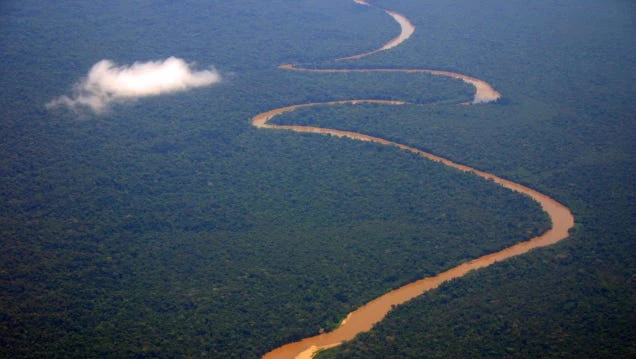Discovering Lost Cities in the amazon Rainforest Using Laser Technology
Laser technology has proven to be an invaluable tool for archaeological discoveries in the amazon rainforest. Archaeologists in Ecuador have utilized this cutting-edge technology to uncover a fascinating network of ancient earthen mounds hidden beneath the dense canopy of the forest. The discovery has brought to light the existence of thousands of earthen platforms interconnected by ancient roads, dating back over 2,000 years.
The discovery marks a significant breakthrough in our understanding of the ancient civilizations that once thrived in the amazon region. The use of lidar, or Light Detection and Ranging technology, has enabled researchers to unveil the true scale and complexity of these ancient cities that had eluded detection for centuries.
The Archaeological Significance of the Findings
The recent findings published in Science shed light on the extensive road systems, large platforms, plazas, streets, and agricultural drainage systems that were integral to the ancient settlements in Ecuador’s Upano Valley. This network of interconnected urban centers spans tens of kilometers, showcasing a sophisticated regional-scale network.
The research indicates that these sites were inhabited for an extended period, from approximately 500 BCE to between 300 CE and 600 CE, providing valuable insights into the historical timeline and societal structure of the ancient Upano people. The multi-city network is estimated to have supported a population ranging from 10,000 to possibly 30,000 individuals at its peak.
The Role of lidar in Archaeological Exploration
Lidar technology has emerged as a game-changing tool for uncovering ancient structures in challenging environments such as densely forested areas. Its ability to penetrate the thick vegetation of the amazon rainforest has revealed a wealth of previously hidden archaeological treasures.
Archaeologists across various regions, including Mexico, have harnessed the power of lidar to gain deep insights into the layout and organization of ancient settlements. In Mexico, lidar surveys unveiled crucial details about the orientation of settlements, providing invaluable knowledge about the historical inhabitants’ urban planning and construction techniques.
The Impact of lidar on Modern Archaeological Practices
The utility of lidar technology is not limited to uncovering ancient cities; it has also found application in the analysis of modern sites and landscapes. Recently, satellite companies have explored the potential of utilizing lidar from space to map the Earth’s terrain with remarkable precision.
The integration of lidar into archaeological practices has opened up new avenues for exploring and understanding both ancient and contemporary landscapes. It has revolutionized the way archaeologists approach surveying and mapping, enabling them to reveal intricate details that were previously inaccessible.
Preserving the Legacy of Ancient Civilizations
The discoveries made possible by lidar technology underscore the importance of preserving and protecting the rich cultural heritage of ancient civilizations. The intricate networks of structures and systems uncovered in the amazon rainforest and other regions serve as a testament to the ingenuity and resourcefulness of past societies.
By leveraging advanced technologies like lidar, researchers and conservationists can work together to safeguard and interpret these ancient sites, ensuring that they continue to inspire and educate future generations about the diverse and complex history of our planet.
Conclusion
The use of lidar technology has led to remarkable discoveries in the amazon rainforest, revealing the footprint of lost cities and shedding light on the sophisticated urban networks of ancient civilizations. This innovative approach to archaeological exploration holds tremendous potential for uncovering new insights into our shared human history, enriching our understanding of the past, and informing how we preserve and honor the legacy of the ancients.
Source: gizmodotech








No Comments